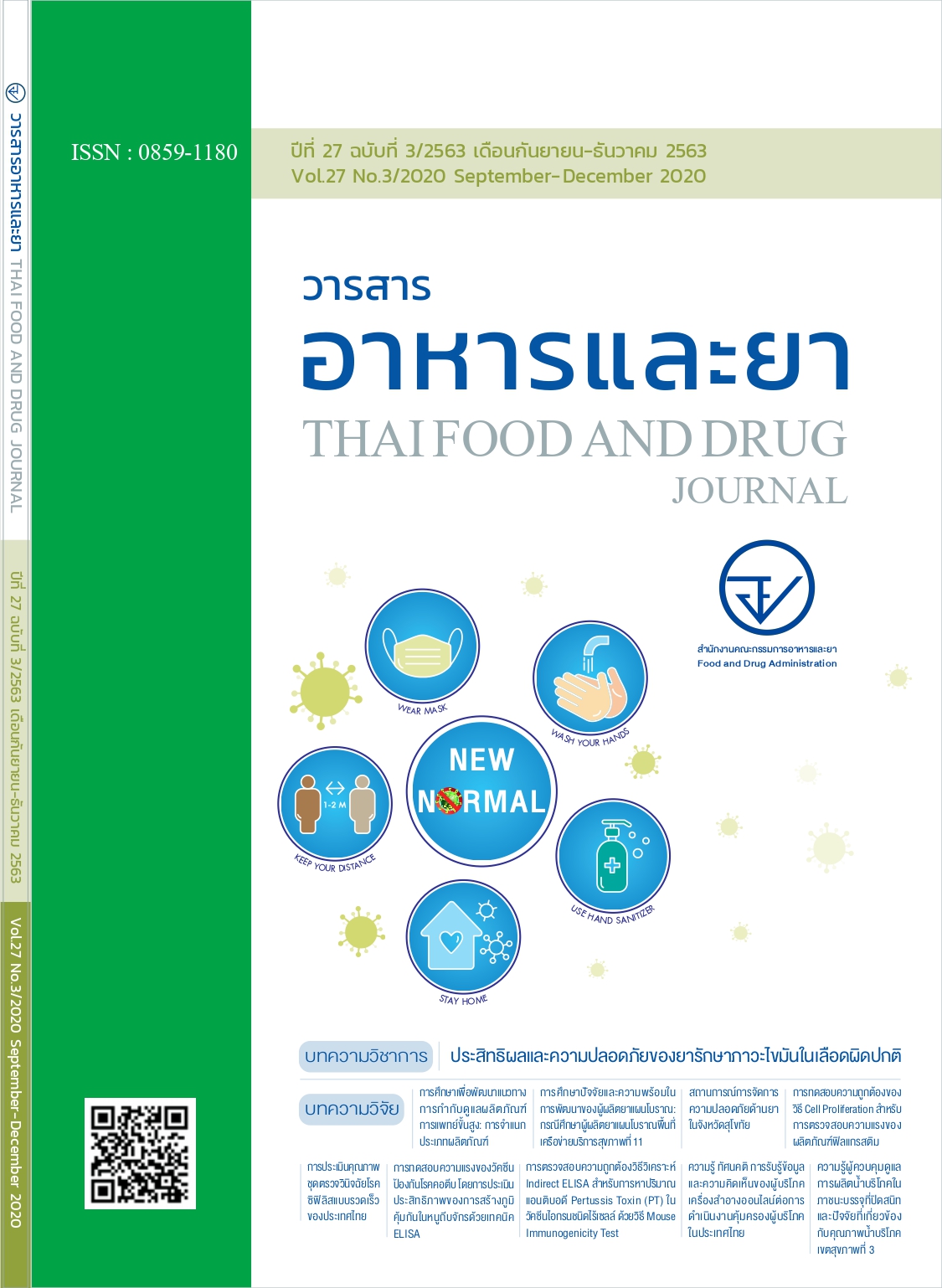Method Validation of Cell Proliferation Assay for Filgrastim Potency Testing
Keywords:
cell proliferation, filgrastim, potencyAbstract
Nowadays, biosimilar filgrastim is being to produce in domestic, quality control of filgrastim products is therefore necessary. The strength examination by using a cell proliferation method is common used in many countries. The study aimed to measure the accuracy of the methods in various parameters which include: specificity, accuracy, precision, linearity, and robustness. The results showed that this method revealed specificity to only filgrastim standard and samples. They were able to trigger the proliferation of adapted M-NSF-60 cells when compared with the formulation buffer. For the accuracy, the relative potency of filgrastim standard at 50, 100, and 150% was analyzed and showed that the %recovery were within the acceptance criteria from 80 to 125%. The precision of the method was less than 25% of GCV. Linearity and range exhibited the r2 = 0.9979 in the suitable range at 50-200% of relative potency. The robustness of the method was tested by modifying the passage numbers of cells and the incubation time. The robustness indicated that the 4 to 20 passage numbers of cells was able to use and incubation time by 27 and 29 hours, whereas %GCV was less than 25% at 95% confidence level (p = 0.11). All of the results confirmed that the cell proliferation method had the specificity, accuracy, precision, and
robustness. It is clear that this method is suitable to use as a standard method for the potency test of filgrastim products.
References
2. Guidelines on evaluation of similar biotherapeutic products (SBPs). In: WHO Expert Committee on Biological Standardization: sixtieth report. Geneva: World Health
Organization; 2013: Annex 2 (WHO Technical Report Series, No. 977. Available from : URL: http://www.who.int/biologicals/expert_
committe/TRS_977_60th_report.pdf?ua=1.[cited 2018 July 19].
3. Wadhwa M, Bird C, Dilger P, Mire-Sluis AR, Thorpe R. Quantitative biological assays for cytokines, In: Balkwill F.R. (Ed.), CytokineCell Biology-A Practical Approach, 3rd
Edition. Oxford University Press, Oxford,p. 207. Infect Immun 1996; 64(1): 1-9.
4. Weinstein Y, Ihle JN, Lavu S, Reddy EP.Truncation of the c-myb gene by a retroviral integration in an interleukin 3-dependent myeloid leukemia cell line. Proc. Natl Acad
Sci. USA 83(14), 5010.
5. U.S. Pharmacopeia National Formulary USP 41 NF 36, 2018: p. 1740-1741.
6. Sorgel F, Lerch H, Lauber T. Physiochemical and biologic comparability of a biosimilar granulocyte colony-stimulation factor with its reference product. Biodrugs 2010; 24(6):347-57.
7. Wadhwa M, Bird C, Hamill M, Health AB,Matejtschuk P, Thorpe R, et al. The 2nd international standard for human granulocyte colony stimulating factor. J. Immunol. Methods 2011; 367: 63-9.



